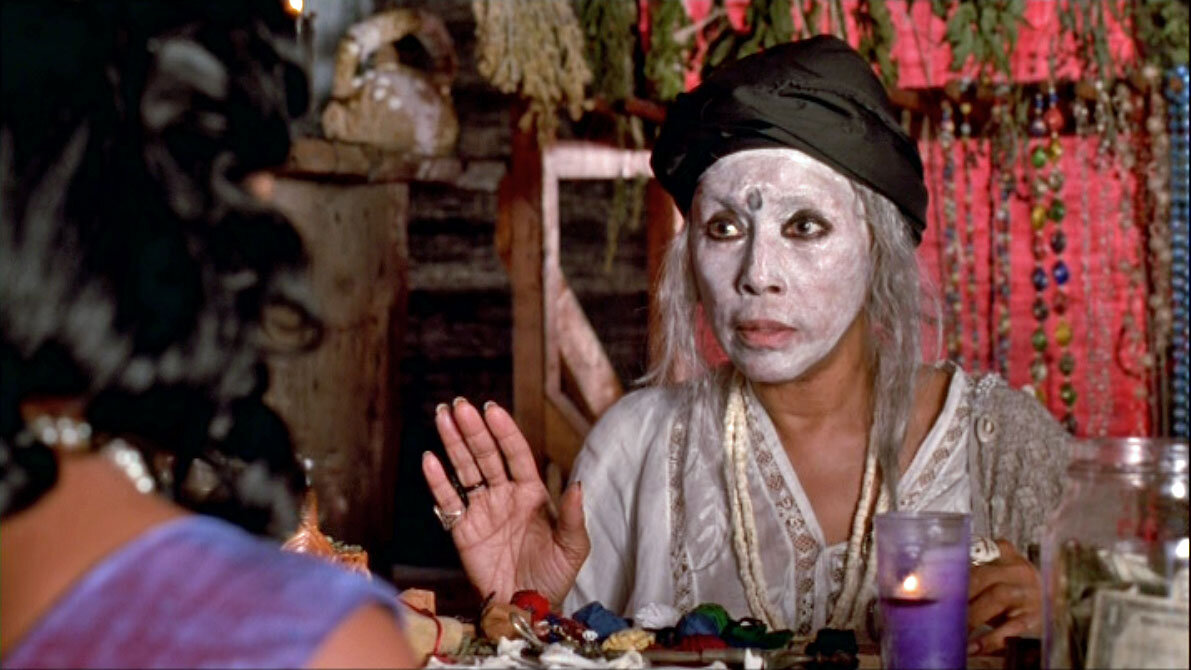A Woman on Women
Because my personal creativity has been a lil squashed, I wanted to compile a short list of films that I constantly revisit for inspiration. I have a really personal connection to all 5 of these movies and could easily write essays about all of them, but I’ll try to keep this short and just whet your appetite! All five of these movies are directed by women who wanted a hand in their own narratives. All but one are period pieces that revise a place and group of people to be shown as they truly were by the people who knew them.
DAUGHTERS OF THE DUST (1991)
Written and directed by Julie Dash, Daughters of the Dust is a film that takes place at the turn of the century. It depicts a Gullah family who have decided to migrate from the island they grow up on to the mainland, and is a gorgeous exploration of the tension between family tradition and assimilation. When the matriarch tries to convince her family to stay on the island where their forefathers are buried, many of the other family members must wrestle with their desires to join mainland society and “benefit” from the reconstruction period or keep their family intact where they are deeply rooted. Much of the film’s magic lies in Julie Dash’s ability to make the audience invested in a multitude of characters who may only have a few scenes. This film has a nontraditional structure, reads like a visual poem, and is also the first feature to be directed by a black woman to get a wide release. Having grown up where this film takes place, it’s the only film I can think of that truly captures the beauty of the landscape of coastal Georgia and South Carolina. It also forces me to grapple with my own decision to leave home. As I watch the film, I find myself silently begging the Peazants to stay with Nana on Sea Island where life is safe and usual, but I myself made the choice to leave the same land to move to Texas, because I’m aware that safe doesn’t mean best. With a lovely score and beautiful cast clad in Victorian dresses, this film feels like breathing through tears and a smile.
What to (re)watch if you liked it: Beyonce’s Lemonade - this was a big touchstone for her when creating it
CARAMEL (2007)
Caramel is the directorial debut of Lebanese filmmaker Nadine Labaki. For her first film, it was important to her to show Lebanon how it actually is, complex and full of life, and not destitute and war-torn the way that it is portrayed in western media. This film centers around a diverse group of women working in a hair salon in Beirut. It shows the city as a thriving metropolitan area where women have to confront aging, infidelity, queer relationships, religious norms, and familial bonds. It’s as funny as it is heartbreaking, and it shows one of my favorite places in the world honestly rather than sensationally. It lets the film first be about female friendship then adds the nuance of taking place in the Middle East. This is the most traditionally realist film on the list, and it shines in its simplicity. Labaki’s voice is really strong and she has successfully made a film for Lebanese viewers as well as outsiders. Her characters feel like the women you grew up around: lived in. I’m happy to have it as a reference because when I was returning home after a trip to Lebanon, someone earnestly asked me what it was like to “return to civilization” and it forced me to realize that some people aren’t given the proper perspective.
What to watch next if you liked it: Haifaa al-Mansour’s Wadjda for another intimate look at real life in the Middle East
ORLANDO (1992)
Orlando is based on the Virginia Woolf book of the same novel. In the first chapter of the film, Tilda Swinton’s character Orlando is commanded by Queen Elizabeth the First to never grow old. Orlando does just that and moves through the world with the privilege of a young, attractive white man toying with love, war, and poetry. The true conflict comes to fruition after Orlando is forced to question his manhood entirely and must learn to understand what it’s like to live as a woman in England. I can’t get over how gorgeous all the costumes in this are and how Tilda Swinton is still able to outshine them. I’m always stunned whenever her gaze breaks the fourth wall. The score is unexpected and lingers with you long after the film is over. This film shows how taking liberties with its adapted material can help the film become a dialogue with its source.
What to watch next if you liked it: Amma Asente’s Belle for another flip on the traditional Victorian script.
CHICKEN WITH PLUMS (2011)
Chicken with Plums is the second film of, and based on the second graphic novel by, Marjane Satrapi (writer/director of Persepolis). It was adapted and directed by Satrapi and Vincent Paronnaud. This film was entirely filmed on a soundstage, which allows the filmmaker's to recreate 1950s’ Tehran, the Iran that Persepolis is longing for when the conflict breaks out. Similar to Caramel, Satrapi wanted to make a film that showed beautiful landscapes and small countryside villas that exist in Iran outside of the western media’s portrayal, and in doing so made Iran the setting of a fairy tale instead of a land overshadowed by politics and religion. The film is about a violinist’s final 8 days after choosing to die when he loses his ability to play music. He recounts stories of his life to the angel of death, who listens with glee. The story is a romantic tale of love and loss with elements of magical realism that stunned me when I first saw the film in 2012. It also balances humor and the macabre delicately. It’s an excellent depiction of the intoxicating hurt of nostalgia and doesn't shy away from self pity. This film really helped me gain the vocabulary and develop my love for magical realism in cinema. It also HIGHLY influenced my love for soundstages and bringing outside inside. The main character is based off of Satrapi’s uncle and proves that even the small parts of our lives can be monumental.
What to watch if you liked it: Ana Lily Amirpor’s A Girl Walks Home Alone At Night for a darker, but still fairy-taled look at Iran
EVE’S BAYOU (1997)
I end this list where I began it, curtained in Spanish moss. Kasi Lemmons’ directorial debut centers around the well-to-do Batiste family in 1960s Louisiana. A thick canopy of live oaks frames this Sirkian melodrama about the thread that thinly holds family together and what happens when the underbelly of the “perfect” is exposed. By this point, you can probably tell I adore a strong ensemble cast, and this is easily one of the best. Samuel L. Jackson shines as the patriarch of the Batiste family: a handsome doctor who makes quite a few house calls to women around town (I love seeing Jackson play a soft and sensual man, in contrast to the harsher characters we often see him play). But Debbie Morgan’s black widow teetering on the edge is the backbone of the film. Her monologue explaining her curse is one of the most magnetic performances I have ever seen and always gives me chills. Lemmons effortlessly weaves the audience through voodoo mysticism and the unreliable memories of one fateful summer. This was the first film that helped me realize what it meant for the location to also be a character in the film. The bayou’s density shades the characters and helps their sin feel less harsh. It also influenced me greatly as a storyteller because I realized the river in my backyard was enchanted if I caught it in the right light.
What to watch next - Celine Sciamma’s Girlhood for another taste of female adolescence; Anna Biller’s Love Witch for the magic and whimsy
So, those are few of my favorites, in no particular order. I could list many other films by female directors that are important and matter to me, but this is a good entry point for independent cinema. If you watch these and want to talk about them, I would love nothing more than to discuss over Instagram or coffee.
XOXO,
EB











I'm Emily Basma, a filmmaker and photographer who firmly believes films save lives. But also I'm not as serious as I seem on the internet. Follow me on insta @emilybasma and reach out if you want to discuss the through-line of Greek mythology and Sailor Moon.